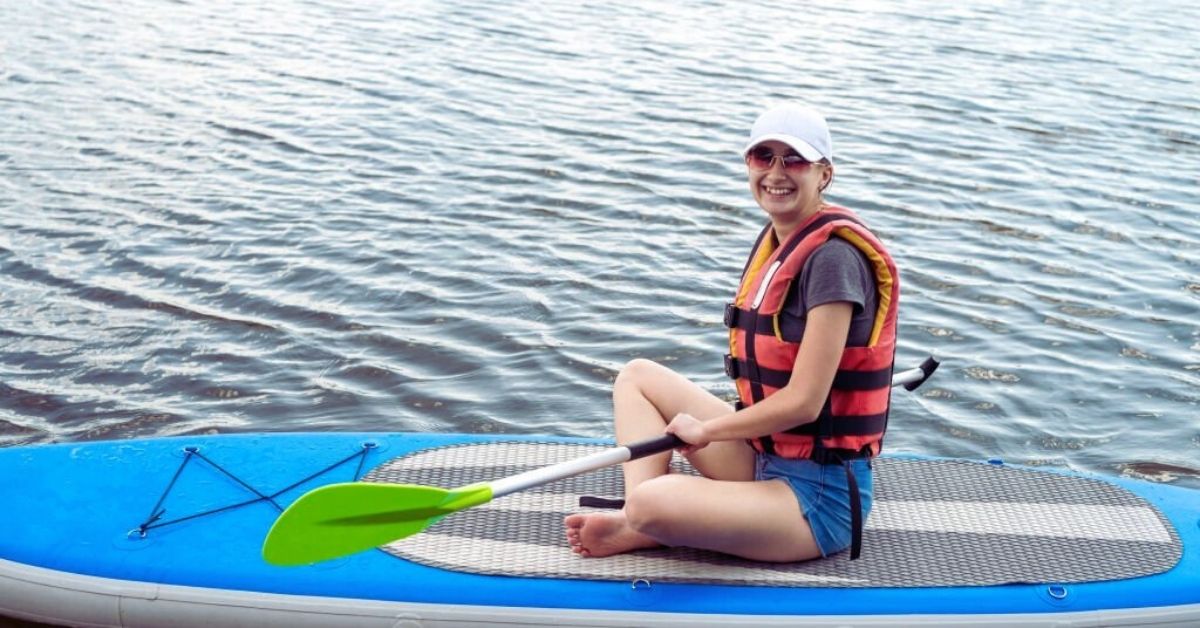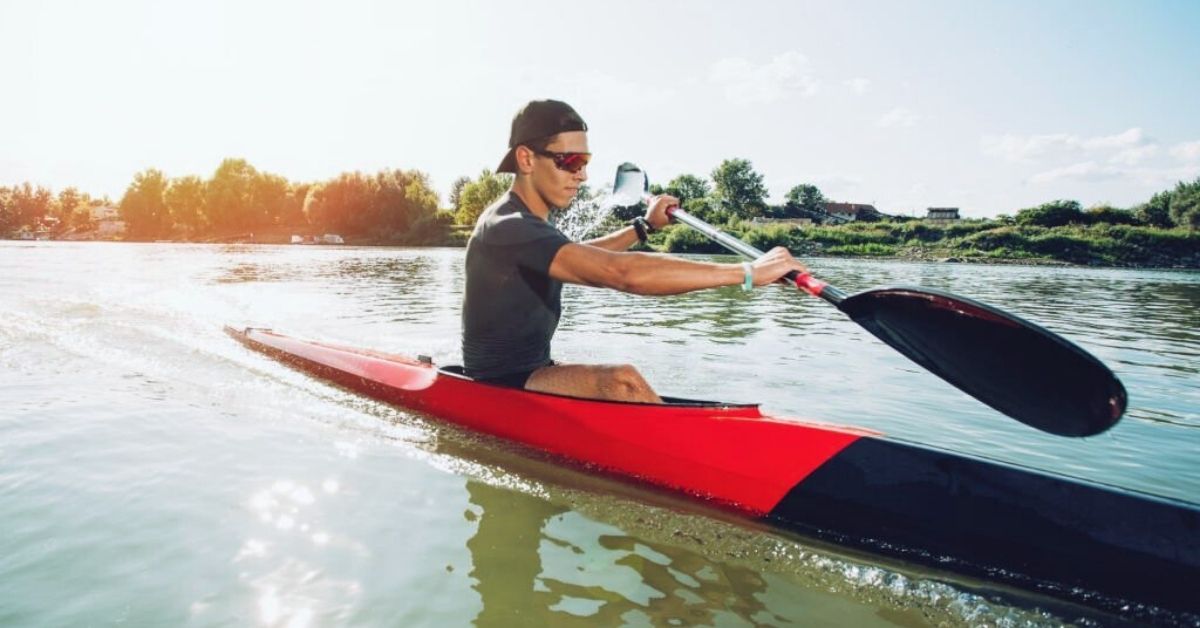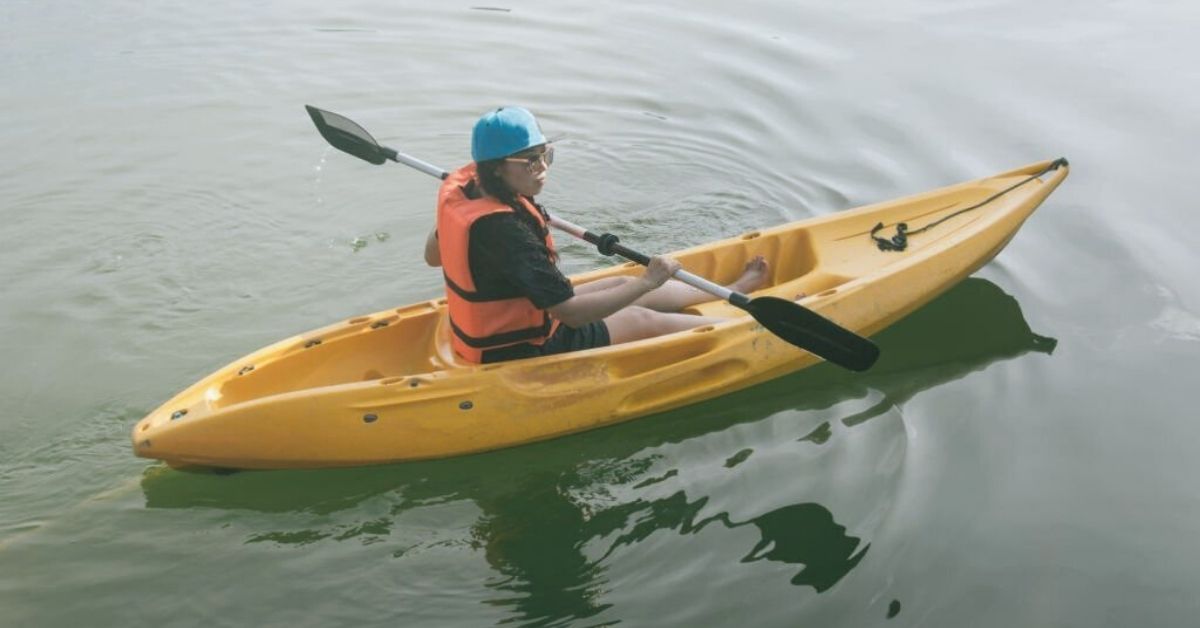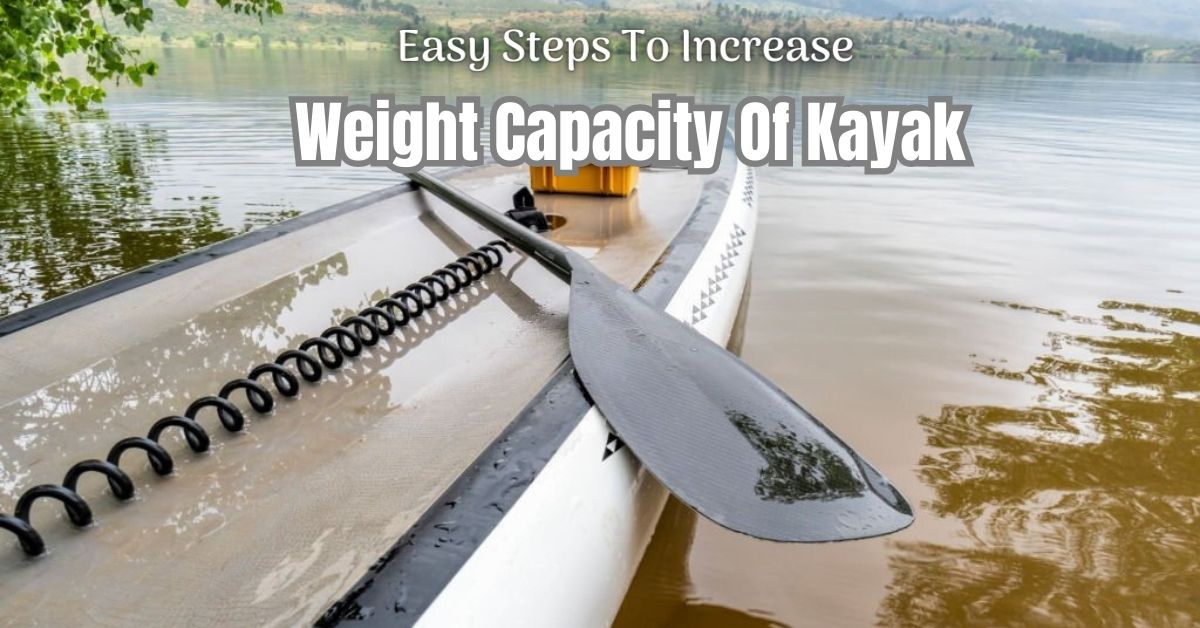All ages and ability levels may enjoy kayaking, a thrilling outdoor sport. However, kayakers typically struggle with their kayaks’ weight capacity.
Increasing your kayak’s weight capacity is vital whether you’re going camping, on a lengthy day trip, or just bringing additional stuff.
Five simple ways to paddle confidently and enhance your kayak’s weight capacity are in this blog article. To maximize your kayaking experience, you’ll learn everything from purchasing a kayak to installing flotation devices and wearing suitable gear. These techniques will let you load more and tackle harder waters.
Table of Contents
1. The relevance of kayak weight capacity
Any paddler, novice or expert, must understand kayak weight capacity. The weight capacity is the most a kayak can safely carry without affecting its stability, maneuverability, or performance.
Why is weight capacity important? It immediately affects water safety. Exceeding the weight capacity might make the kayak unstable and likely to capsize. This is particularly risky in difficult or unexpected settings.
Exceeding the weight limit might also make the kayak harder to manoeuvre in tight locations, currents, or waves. It may also strain the kayak’s structure, causing damage or premature wear.
Knowing and following your kayak’s weight capacity is crucial to safe and fun paddling. This includes your body weight and any gear, equipment, and supplies you intend to carry.
Weight capacity depends on kayak design, materials, and construction. The weight restriction for your kayak model must be determined by the manufacturer’s specs and recommendations.
Respecting your kayak’s weight capacity lets you paddle safely. This information will help you choose what to carry on kayaking trips and keep your kayak in good condition for years.
2. Finding your kayak’s weight capacity
Assess your kayak’s weight capacity before making any adjustments. This will help you calculate how much weight your kayak can hold and what it can manage.
Check the manufacturer’s specs to determine your kayak’s weight capacity. Most kayak manufacturers provide model weight capacities. This is normally in the owner’s handbook or manufacturer’s website.
Remember that the manufacturer’s weight capacity may be conservative. Your kayak’s weight capacity might also depend on your paddling expertise, water type, and accessories.
Simple tests include filling your kayak with your typical paddling gear and yourself for a more accurate evaluation. Include your usual kayaking gear, including PFDs, food, water, camping gear, and other extras.

After loading, check the kayak’s waterline. The waterline should be somewhat below the kayak’s design. The waterline being near to the kayak’s gunwales or the kayak feeling unstable may indicate that you have surpassed its weight capacity.
Weighting your kayak over its limits might damage its stability, mobility, and safety. To enhance the kayak’s weight capacity, you must stay within its design and construction.
Assessing your kayak’s weight capacity properly will provide you a good basis for increasing its weight capacity.
Understanding Kayak Weight Capacity
Understanding kayak weight capacity is essential for safe and fun paddling. Kayak weight capacity is the most weight a kayak can carry without impairing stability or performance. Kayak design, materials, and construction determine it.
Overloading a kayak may cause instability, maneuverability issues, and capsizing. The weight of the paddler, gear, and any extra equipment must be considered before kayaking. To avoid exceeding the kayak’s weight capacity, check the manufacturer’s instructions.
3. Five simple methods to enhance kayak weight capacity
Relax if your kayak’s weight capacity limits your ability to carry all your supplies for travels! You may enhance your kayak’s weight capacity and paddle confidently with easy procedures.
1. Buying a bigger kayak
Upgrade to a higher-capacity kayak if your present one can’t accommodate your weight. Upgrade to a kayak with a larger weight capacity for peace of mind and confidence to enjoy your paddling experiences.
When upgrading, consider your weight capacity. Consider your weight and any kayaking gear you usually carry. This will help you pick a kayak that can comfortably carry the weight.
Look for kayaks intended for heavier loads. To withstand the extra weight, these kayaks have stronger materials and strengthened hulls and seats. They may feature broader beams for stability.
Consider the manufacturer’s weight capacity and characteristics while shopping for kayaks. This shows you the kayak’s capabilities and if it meets your demands.
Size, form, and design of the kayak should also be considered. A wider kayak offers better stability and buoyancy, which may help when carrying bigger loads. Look for adjustable chairs and adequate storage to improve comfort and safety.
Buy a bigger kayak to improve your paddling. It lets you comfortably explore new seas, carry more gear, and enjoy longer outings without worrying about your kayak’s limits. Upgrade to a kayak that fits your weight capacity to paddle confidently and enjoy kayaking.
2. Distributing kayak weight equally
How you distribute weight within your kayak is vital to boosting its weight capacity. Weight distribution improves kayak stability and paddling performance.
Start by putting heavier things in the kayak’s middle for optimum weight distribution. This stabilises your kayak and prevents it from tipping. Camping gear, coolers, and other heavy items should be in the center.
Next, weight the front and back equally. Too much weight in the bow or rear may unbalance the kayak and impair mobility. Balanced distribution helps the kayak to glide easily over the water, making paddling enjoyable and safe.
If your kayak includes storage compartments or bulkheads, use these to distribute weight equally. You can arrange your stuff and distribute weight using these sections.
Consider how you pack your things. Place heavy objects lower in the kayak to reduce its center of gravity and improve stability. Place lighter objects on top of heavier ones or at the kayak’s ends.
Pack and unpack your kayaking gear regularly to examine and modify weight distribution. This helps you adjust to varied situations, maintain stability, and maximize kayak weight.
Following these basic procedures and spreading weight evenly in your kayak may boost its weight capacity without sacrificing safety or performance. Paddle confidently knowing you’ve taken safeguards for a safe and fun kayaking experience.
3. Minimizing unneeded gear and accessories
Minimizing unneeded gear and accessories is one of the best ways to increase your kayak’s weight capacity. We kayakers tend to pack more than we need, which might reduce our kayaks’ weight capacity and restrict our ability to transport more people or things.
Assess the kayaking gear and accessories you usually carry. Are there any infrequently used goods that might be replaced with lighter ones? Try to remove everything that isn’t useful by considering its usefulness and need.
Prioritize multi-functional gear. Look for multipurpose products like a lightweight camping stove that can prepare meals on the road. You may minimize equipment weight while preserving usefulness by choosing adaptable gear.
Additionally, consider accessory size and weight. Are there smaller or lighter options? Instead of a bulky cooler, bring a lightweight insulated bag to keep food and beverages chilled. This simple modification may significantly increase your kayak’s weight capability.
Weight distribution in your kayak is also important. To be stable on the water, distribute the remaining gear and accessories equally. This will improve your kayak’s weight capacity and paddling pleasure.
Take the effort to remove unneeded gear and accessories to optimize your kayak’s weight capacity and feel confident on longer journeys or carrying more supplies. Streamlining your gear reduces weight and lets you enjoy kayaking without sacrificing safety or comfort.
4. Utilizing storage effectively
To increase your kayak’s weight capacity, use storage effectively. By optimizing storage capacity, you may increase gear and supplies without affecting kayak stability.
Storage may be optimized using dry bags and waterproof containers. These keep your items secure and dry and maximize space. Try different dry bags to accommodate different goods and use every space in your kayak.
Bungee cords and deck rigging are excellent storage solutions. These elastic ropes can fasten camping goods, coolers, and fishing gear to your kayak deck. This secures your valuables and frees up kayak space.
Use any kayak hatches or storage sections. The storage spaces are meant to keep your stuff tidy and accessible during paddling trips.
Weight distribution in your kayak is important. Putting heavier materials near the kayak’s center of gravity can help balance it. This may take some trial and error, but placing your gear properly can increase your kayak’s weight capacity.
Finally, declutter and pack just what you need for your vacation. Examine your gear and remove any needless weight. Light travel increases your kayak’s weight capacity and makes paddling more fun and easy.
By using storage choices wisely, you can comfortably increase your kayak’s weight capacity and go on expeditions knowing you have everything you need safely stowed. Pack wisely, arrange well, and paddle confidently!
5. Weight distribution during paddling
Weight distribution during paddling is key to enhancing kayak weight capacity. It enhances kayak performance and provides a safe ride.
First, weight distribution impacts kayak balance and maneuverability. Uneven weight distribution may cause a kayak to tilt or become hard to steer. This is especially difficult in choppy waves or across obstructions.
Place heavier things like coolers or camping gear in the kayak’s middle to distribute weight. This keeps kayaks balanced and avoids tipping. To stabilize the kayak, distribute weight equally between the front and rear.
Sit in the kayak’s middle to disperse weight. Make sure both paddlers share weight in a tandem kayak or while paddling together.
Be aware of where you keep your things in the kayak. Heavy things at the bottom of the kayak’s storage compartments might reduce the center of gravity and improve stability.
Finally, watch your body posture when paddling. Your body weight should be balanced for effective strokes and control.
Following these easy procedures may enhance your kayak’s weight capacity, giving you the confidence to carry all your gear on paddling trips. Always emphasize safety and stability and never exceed your kayak’s weight capacity. Happy paddling!
4. Safety tips for weight capacity increase
When expanding your kayak’s weight capacity, safety comes first. It may be tempting to pack your kayak with more gear or passengers, but you must follow safety precautions to avoid aquatic catastrophes.
The manufacturer’s weight capacity for your kayak model should be understood first. Exceeding this restriction might make your kayak unstable and dangerous. For safe and fun paddling, follow manufacturer instructions.

Second, weight the kayak equally. The kayak may flip over if all the weight is on one end or side. Spread the extra weight over the kayak to keep it balanced.
Buying kayak equipment like flotation devices or stabilizers may improve stability while carrying more weight. These attachments may help keep your kayak stable and prevent capsizing.
If you carry big weights, check your kayak for wear and tear often. Check the kayak for cracks, leaks, and problems that might affect its structure. Fixing these concerns quickly may keep your kayak safe.
Finally, check the weather and water before kayaking. With more weight, rough water or strong currents might compromise your kayak’s stability. Assessing the circumstances and making educated judgments about paddling with greater weight capacity is crucial.
Follow these safety measures to increase your kayak’s weight capacity and paddle with confidence, knowing you’ve taken the essential safeguards for a safe and fun trip. When kayaking, safety should always come first. Never compromise for extra gear or passengers.
5. Knowing and respecting your kayak’s limits
Understand your kayak’s limits and stick to them for safe and fun paddling. No kayak can carry more weight than its maximum weight capacity without losing stability or maneuverability. Exceeding this weight restriction might capsize or damage your kayak.
Check your kayak’s label or manufacturer’s specs for weight capacity. Consider your weight and the weight of any gear, equipment, or supplies you want to carry kayaking.
Once you know your kayak’s weight capacity, remain within it. Weighting your kayak may alter your balance and stability on the water. Weight the kayak equally, with heavier things closer to the center for balance.
When kayaking with many people, consider weight distribution. Maintain a balanced center of gravity by properly distributing weight between the front and rear.
Understanding and respecting your kayak’s limits will keep you safe and extend its lifetime. Regularly check your kayak for wear and tear, which might reduce its weight capacity.
You may kayak confidently and enjoy your experiences by remaining within your kayak’s weight restrictions and maintaining balance.
6. Increasing weight capacity for kayaking activities advantages
Increasing your kayak’s weight capacity may assist several kayaking activities. As a leisure paddler, fisherman, or adventurer, a bigger weight capacity expands your options and improves your water experience.
For recreational paddlers, greater weight capacity lets them pack more gear and supplies for longer trips. This might contain camping gear, food, water, and additional clothes. With a bigger weight capacity, you can explore distant locations and remain on the water for long durations without running out of supplies.
A increased weight capability also benefits anglers. Fishing gear, bait and catch coolers, and extra seats for a fishing partner may be accommodated. With additional room and weight capacity, you can carry all your gear and enjoy a wonderful fishing day without feeling crowded.
Increased weight capacity is vital for kayak touring and overnight journeys. It holds tents, sleeping bags, cooking gear, and more. You may explore new streams and appreciate nature at your own speed on multi-day trips with a bigger weight capacity.
Additionally, increasing weight capacity improves kayaking safety. It keeps you afloat in harsh seas and unforeseen events. A heavier kayak is more stable, lowering the chance of capsizing or feeling overwhelmed.
In conclusion, raising your kayak’s weight capacity enhances several kayaking activities. It lets you carry more gear, visit distant regions, fish well, go on exciting adventures, and be safe on the water. You may paddle confidently and enjoy kayaking by following the simple methods to enhance your kayak’s weight capacity.
7. Avoid these weight-gain blunders
Many individuals make blunders while raising their kayak’s weight capacity. Avoid these blunders to guarantee your kayak can manage the extra weight without sacrificing safety or performance.
The first error is overloading your kayak. Each kayak can bear a certain weight. Going beyond this limit might make the kayak unstable and capsize. Always follow manufacturer recommendations and weight capacity.
The wrong weight distribution on your kayak is another error. All weight in one place might upset the balance and make maneuvering difficult. To ensure stability and control, distribute weight equally throughout the kayak.

Misuse of accessories or modifications is another error. It may be tempting to add storage or rigging to enhance weight capacity, but utilizing prohibited accessories or performing changes without adequate understanding might damage the kayak. To keep your kayak safe, use authorized attachments and modifications.
Maintenance and inspection neglect is another prevalent error. Over time, kayak wear may degrade its structure, limiting its weight capacity. To keep your kayak in good condition, check for damage and fix it right away.
Neglecting basic paddling tactics might potentially affect kayak weight capacity. Improper paddling may strain the kayak and reduce its stability. For a safe and enjoyable kayaking experience, use basic paddling skills.
Avoid these frequent blunders to confidently raise your kayak’s weight capacity while emphasizing safety and performance.
8. Frequently asked kayak weight capacity questions
You may need to clarify some typical questions when you raise your kayak’s weight capacity. Common kayak weight capacity questions:
1. Kayak weight capacity?
The greatest weight a kayak may safely carry includes the paddler, gear, and extras. Maintaining this restriction ensures safe and pleasurable paddling.
2. Kayak weight capacity—how?
Manufacturers rigorously test and calculate kayak weight capacity. It considers kayak design, materials, and structural integrity. Exceeding the weight limit might impair kayak stability and safety.
3. Can I slightly exceed weight capacity?
Even slightly exceeding the kayak’s weight capacity is not recommended. Doing so may impair kayak performance, stability, and maneuverability. It may enhance kayak capsizing or damage.
4. Can I add weight to my kayak?
While kayaks cannot be directly increased in weight, they may be optimized for performance and space. Proper weight distribution, lightweight gear, and eliminating needless things are included.
5. What happens when weight capacity is exceeded?
Overweighting may compromise stability, water resistance, and maneuverability. This might make paddling harder and increase accidents. Over time, it may harm the kayak’s structure.
Understand these kayak weight capacity FAQs to make educated judgments and paddle safely and comfortably. Always emphasize safety and observe your kayak’s weight capacity manufacturer rules.
9. Last words and advice to paddle confidently
Confidence is crucial while increasing your kayak’s weight capacity. Paddling confidently improves your kayaking enjoyment and safeguards your safety.
You’ve increased your kayak’s weight capacity by following these five simple procedures. Put your gained information to use and jump in confidently.
It takes practice to perfect. Get to know your kayak’s new configuration and try it in various circumstances. This will help you build trust in your kayak’s stability and fine-tune any alterations.
Explore new seas and challenge your limitations. With your improved weight capacity, you can go further, carry more gear, and paddle with a companion. Only your hesitancy is preventing you from achieving unlimited possibilities.
Above everything, emphasize safety. Protect yourself with a personal flotation device and watch out for weather and water currents. You may enjoy your paddling experiences with confidence since you’ve done all the required safeguards.
So paddle confidently! Enjoy kayaking’s independence and tranquillity knowing you’ve increased your kayak’s weight capacity. With each stroke of the paddle, you’ll feel empowered and fulfilled, knowing you’ve surmounted any obstacles and can easily navigate the waves.
Let your increased confidence take you on thrilling kayaking trips that will create lifelong memories.
Happy paddling!
This blog entry about raising kayak weight capacity should be useful and instructive. By following these 5 simple procedures, you may paddle confidently knowing your kayak can securely handle bigger weights.
